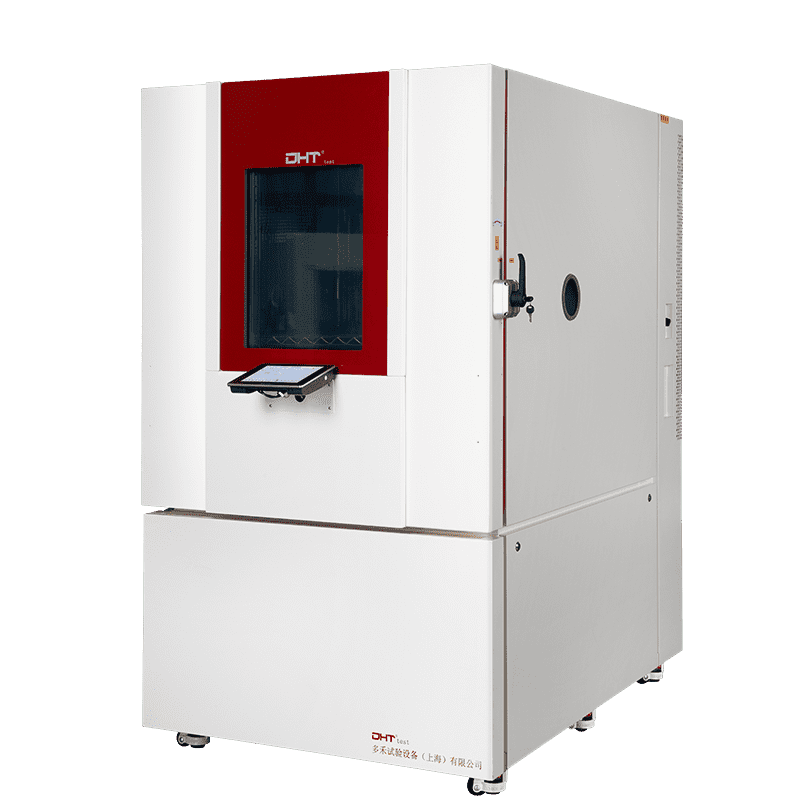Written by Robin
Senior Engineer, Doaho Test (DHT®)
As new energy vehicles (NEVs) continue their rapid rise, the environmental resilience of their three core systems—battery, motor, and electronic control—has become a crucial factor in assessing overall vehicle reliability and safety. Especially when faced with extreme climates, high-altitude thin air, or challenging road conditions, the ability of these systems to maintain stable operation directly influences market competitiveness. Walk-in test chambers play a key role in delivering precise temperature cycling for large-scale systems, providing realistic and controlled environmental simulations for entire vehicles and components alike.
1. Why Is High and Low Temperature Testing Essential for NEVs?
NEVs operate across a vast temperature spectrum—from frigid mornings at -40°C to scorching cabin temperatures above 60°C. Frequent start-stop cycles, fast charging, and rapid acceleration impose intense thermal stresses on vehicle systems, particularly affecting:
-
Battery performance evaluation: Capacity degradation and increased internal resistance at low temperatures, alongside thermal runaway risks at high temperatures;
-
Thermal stability verification of the drive system: Motors and controllers must operate within safe temperature ranges to ensure consistent power output and long service life;
-
Thermal management system effectiveness: Assessing cooling performance and responsiveness during rapid temperature fluctuations;
-
Thermal compatibility testing of critical materials: Ensuring expansion coefficients of seals, wiring harnesses, and interior parts are well matched.
Given these challenges, having a walk-in chamber that can precisely regulate these environmental variables is essential for guaranteeing vehicle quality and safety.
2. Core Technical Advantages of Walk-In Test Chambers
Compared to traditional smaller environmental chambers, walk-in test chambers offer greater volume, integration, and scalability—features that align perfectly with the development and validation needs of new energy vehicles:
-
Support for full-vehicle or large subsystem testing: The walk-in design accommodates large battery modules, drive systems, and even partial vehicle structures, fulfilling space and functional requirements for system-level temperature cycling tests.
-
Wide temperature range with rapid temperature change capability: Advanced models cover from -70°C to +150°C, with temperature ramp rates between 3°C and 10°C per minute, meeting standards such as IEC 60068-2-14 and GB/T 31467.3.
-
Multi-factor environmental simulation: Modular integration of humidity control (10%-98% RH), low pressure, high-altitude conditions, condensation spray, and solar radiation simulation enables complex test environments that closely mimic real-world conditions.
-
Smart testing workflows and data acquisition: Equipped with remote control, automated data logging, anomaly alerts, and connectivity to MES systems, these chambers streamline testing processes while enabling comprehensive traceability.
3. Real-World Application Example
A leading NEV manufacturer utilized a walk-in chamber to conduct continuous rapid temperature cycling between -40°C and +120°C for 72 hours on an 800V high-voltage drive system. By strategically placing thermocouples on the IGBT modules, motor windings, and control boards, engineers gathered precise temperature data that guided a redesign of the cooling system, reducing IGBT temperatures by 12% and significantly enhancing overall system reliability.
4. Selection Tips and Important Considerations
When choosing a walk-in test chamber for NEV testing, prioritize these key factors:
-
Temperature uniformity: Ensure temperature differentials at test points stay within ±2°C;
-
Load capacity and sample mounting: The test platform should accommodate the physical layout of battery modules or drive systems;
-
Robust safety features: Include over-temperature alarms, refrigerant pressure protection, and electrical overload safeguards to ensure safe test operations;
-
After-sales service and customization: Opt for suppliers with proven NEV industry experience, who offer tailored solutions and strong long-term support.
Conclusion: From Simulated Environments to Verified Quality
As NEV technology advances toward higher power, greater integration, and smarter control, walk-in test chambers have evolved from simple environmental simulators to foundational tools that build brand reliability and technical trust. They subject products to worst-case scenarios in the lab, so they perform optimally in the real world.
If you’d like to explore tailored walk-in test chamber solutions for your NEV development needs, please contact DHT®. Our expert team is ready to provide customized technical support to help you confidently navigate every environmental challenge.
FAQ
Why is high and low temperature testing important for new energy vehicles (NEVs)?
NEVs operate in a wide range of environments, from -40°C to over 60°C. Extreme temperatures affect battery capacity, drive system stability, and thermal management performance. High and low temperature testing ensures that batteries, motors, controllers, and materials maintain safety and performance under these real-world conditions.
What advantages do walk-in test chambers offer for NEV testing?
Walk-in test chambers provide larger test volumes, allowing full vehicle or subsystem testing. They offer wide temperature ranges (-70°C to +150°C), fast ramp rates, and support for multi-factor simulations like humidity, altitude, and solar radiation. These capabilities make them ideal for comprehensive NEV reliability validation.
What should be considered when selecting a walk-in test chamber for NEVs?
Key factors include temperature uniformity (within ±2°C), load capacity, safety systems, and compatibility with NEV-specific setups. Also important are advanced control features like remote monitoring, data logging, and integration with MES systems. Choose vendors with proven experience in the new energy vehicle industry for reliable customization and support.


